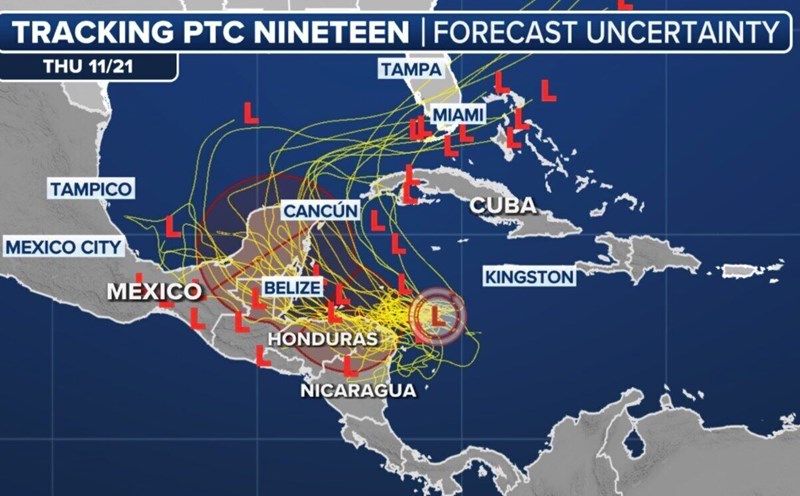The latest hurricane report from the US National Hurricane Center said that Hurricane Sara made landfall in northern Honduras on the night of November 14 and threatened to bring heavy rain across Central America and southern Mexico. Hurricane Sara made landfall about 165 km west-northwest of Cabo thanks a Dios in the Honduras-Natureatureature border area. The landfall location is near Brus Laguna - a village of about 13,000 residents.
Sara has winds of about 75 km/h and is moving west at a speed of about 17 km/h.
Forecasters say Sara will stall and move near the coast of Honduras through the weekend. By November 17, Sara will strengthen and reach the Belize coast. Heavy rain is also forecast for Belize, El Salvador, eastern Guatemala and western Nicaragua.
Mexico's authorities have warned that the latest storm of the Atlantic hurricane season could bring "heavy rains" to the Yucatan Peninsula, which has many resorts.
After strengthening into a storm on November 14, Hurricane Sara is expected to " steadily intensify, even rapidly intensify over warm ocean waters" in the western Caribbean and will be as strong as or near a hurricane as it approaches the Central American coast on November 15 and 16, Director of the US National Hurricane Center Michael Brennan said in the updated hurricane bulletin.
If the center of Sara is offshore, the storm could strengthen, but if it moves inland, the storm could weaken, Brennan said. The new storm threatens to bring heavy rain to Central America over the next few days. The center forecasts rainfall of 250 - 500 mm in northern Honduras, with some places experiencing up to 760 mm.
This could be a catastrophic flood disaster for many parts of Central America, especially Honduras and Nicaragua, he said. The latest storm of the Atlantic hurricane season could dump up to 100 mm in an hour, which was too fast and intense for the soil to absorb in time.
The National Hurricane Center said it is too early to determine how the latest storm of the 2024 hurricane season could impact eastern Gulf of Mexico next week, including Florida, the Florida Keys in the US and Cuba.
USA Today's latest hurricane report also confirmed that the path and final intensity of Sara are still uncertain and forecasters are closely monitoring each computer forecast model. In the worst-case scenario for the US, a major hurricane could hit the Florida Gulf Coast in the middle of next week.
However, Sara's path to Florida could encounter some obstacles, including weakening in Honduras and the Yucatan Peninsula. A cold front expected to form in the Gulf of Mexico early next week is also likely to cause the storm to dissipate before reaching the Florida peninsula, Brian McNoldy, a hurricane expert at the Rosenstiel School of the University of Miami, said.
According to official storm forecasts, Sara is likely to dissipate on November 19. However, if the latest storm continues to strengthen and hit the Florida coast, it would be the fourth hurricane to hit the state this season, behind Debby, Hurricanes Helene and Milton.







